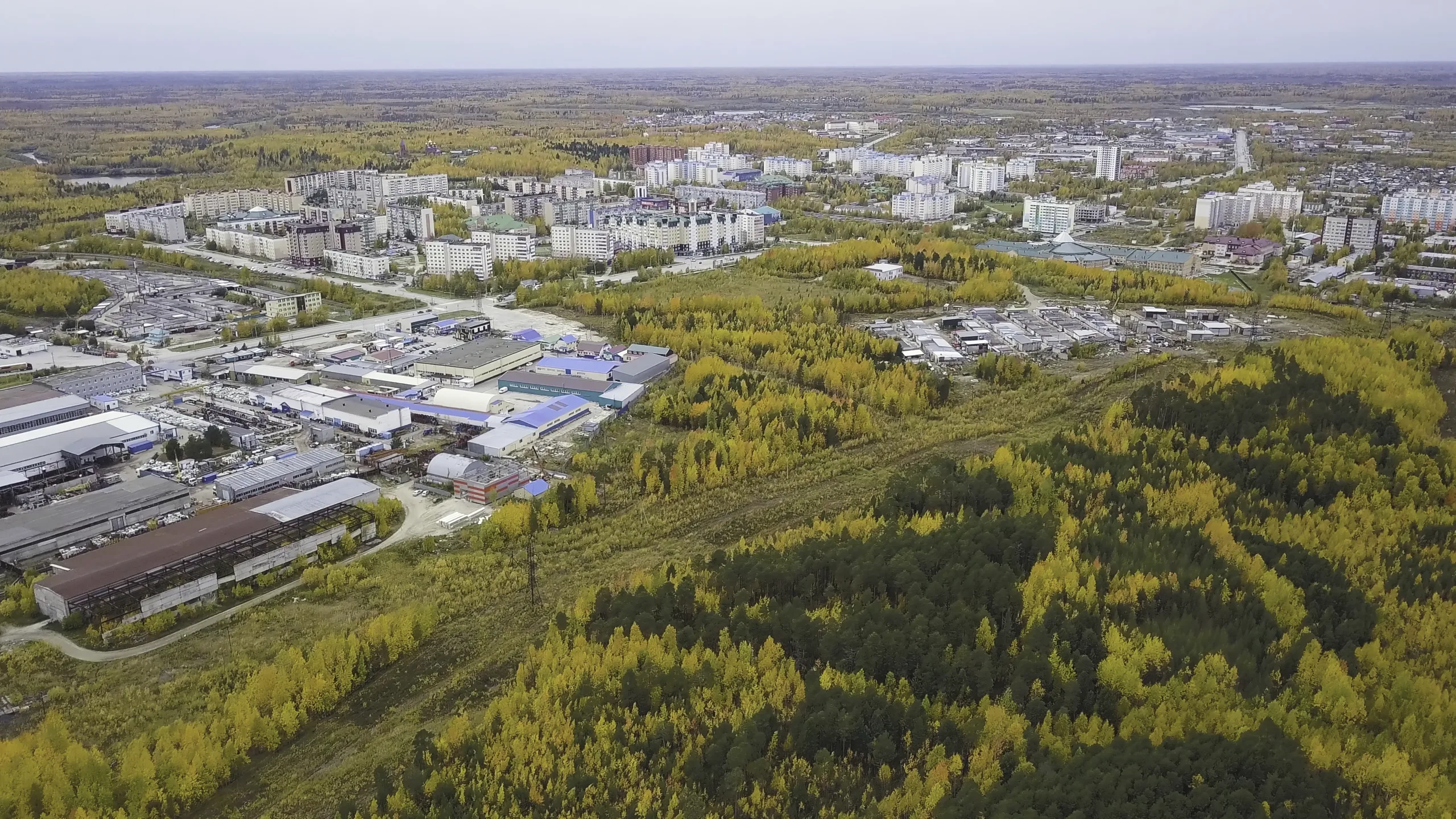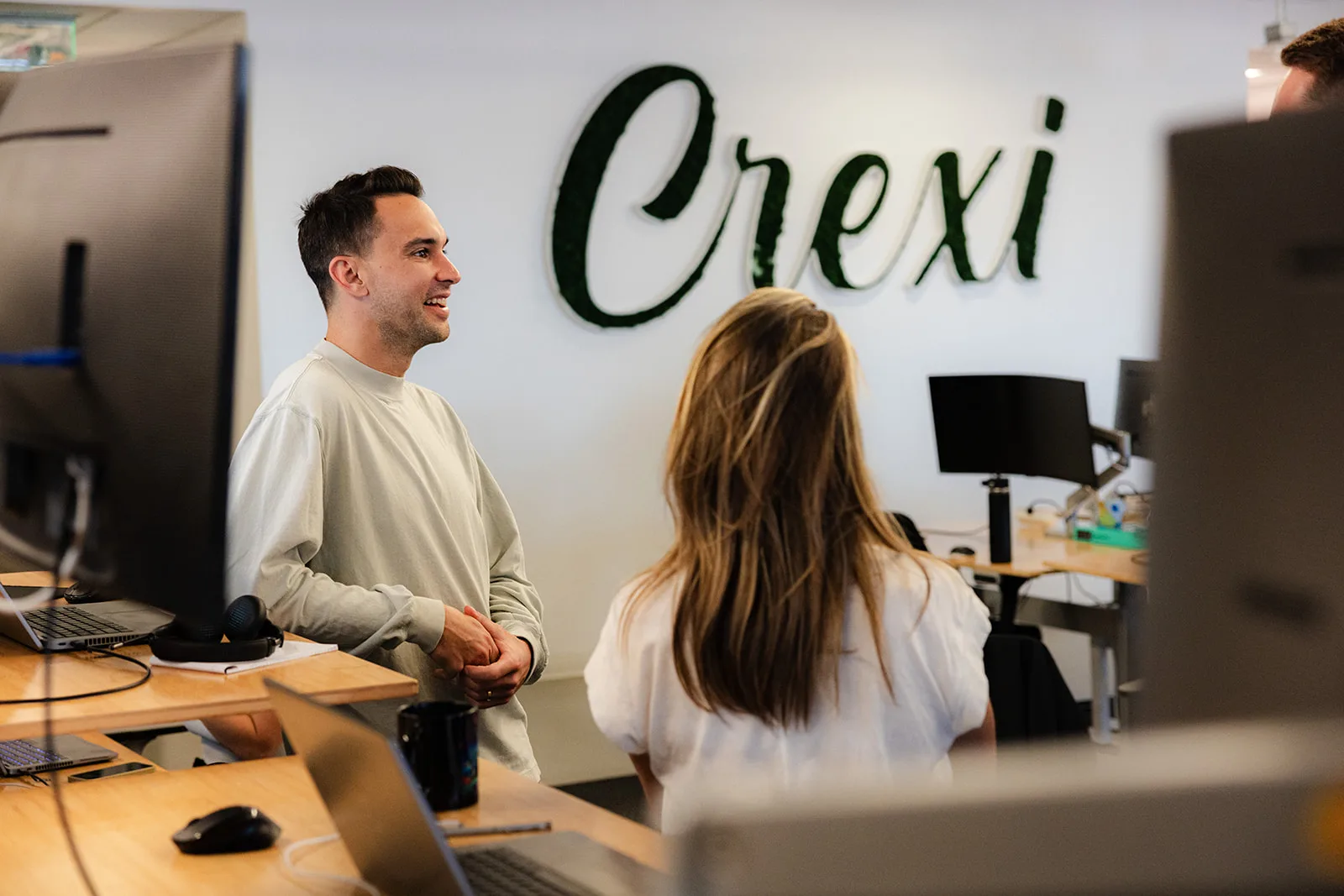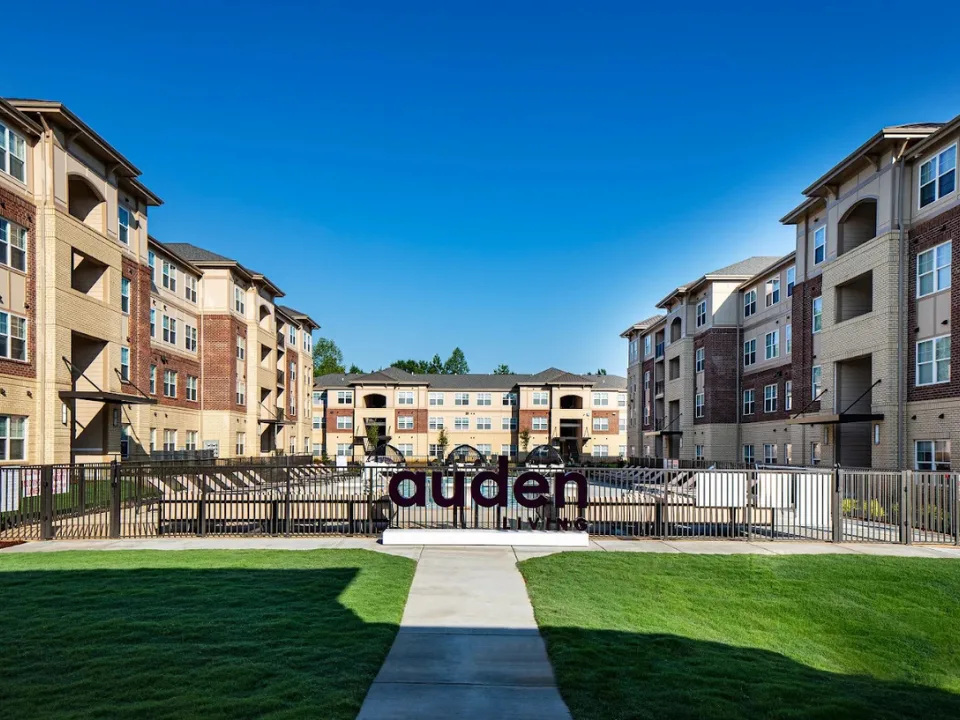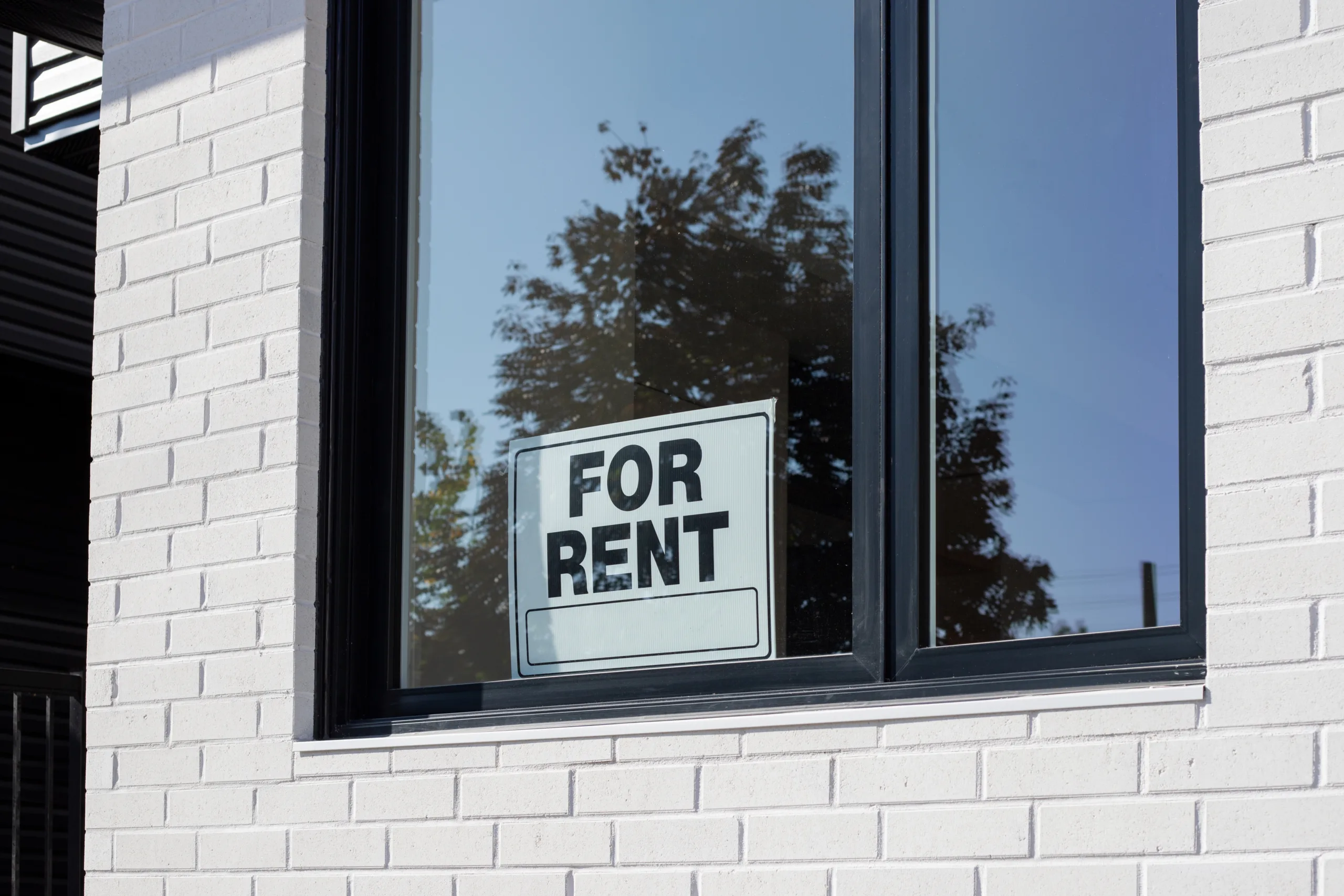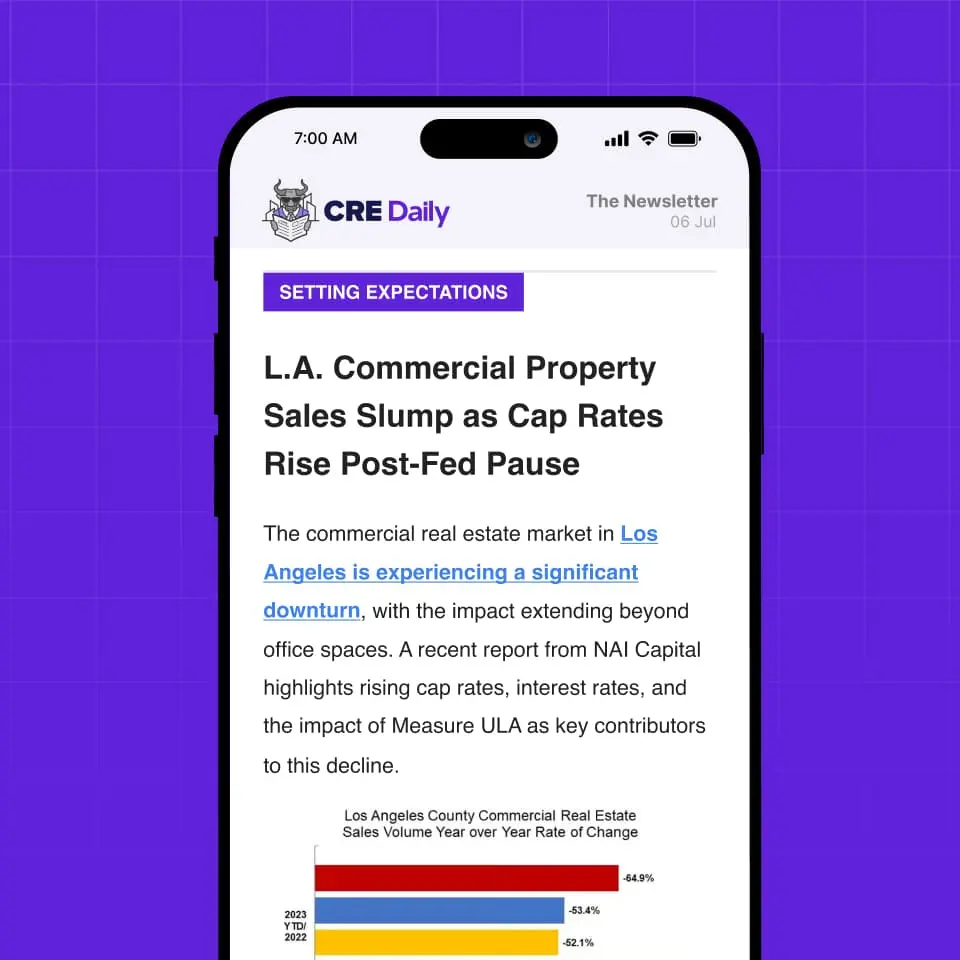Industrial Market Posts First Net Loss Since 2009
Occupiers are shedding space as the sector shifts from pandemic-fueled growth to a leaner, cost-conscious phase.
Good morning. For the first time since the Great Recession, the U.S. industrial market posted negative net absorption—signaling a shift in occupier behavior and a recalibration of post-pandemic demand.
Today’s issue is brought to you by Aspen Funds—direct investment in cash-flowing energy assets.
🎙️This week on No Cap: Jack and Alex sit down with MaryAnne Gilmartin to explore the twists, risks, and breakthroughs that took her from Brooklyn beginnings to leading skyline-defining projects in Manhattan.
Market Snapshot
|
|
||||
|
|
*Data as of 08/15/2025 market close.
MARKET REPORT
U.S. Industrial Absorption Turns Negative After 15-Year Run
A wave of consolidations and bankruptcies pushed industrial net absorption into the red for the first time since the Great Recession.
What happened: According to Newmark, the industrial sector recorded a net loss of 1.3M SF in Q2 2025—its first quarter of negative net absorption since 2009. The total for H1 2025 reached just 47.4M SF, a 35% year-over-year drop. The decline reflects a broad strategy shift, with many occupiers consolidating space to protect margins amid economic and trade uncertainty.
Under pressure: A volatile trade environment is contributing to the slowdown. The Trump administration recently raised tariffs on Canadian imports to 35%, while Mexico and China received 90-day extensions to finalize trade deals. With effective tariff rates swinging between 13.9% and 32.8%, occupiers are hesitant to commit to long-term space decisions.
Trending: Industrial construction fell for the 11th straight quarter, now down to 282.4M SF under development—the lowest since 2018. Meanwhile, industrial employment has flattened, and manufacturing jobs have declined for three months running. Bankruptcies, like Joann’s recent filing, are also freeing up warehouse space in key markets like California and Ohio.
Not all negative: Despite pullbacks, there are bright spots. Consumer spending remains robust, fueling demand from e-commerce players and large retailers. Amazon, for instance, is expanding its same-day grocery delivery to over 1,000 cities, leveraging its logistics network. Manufacturing construction is also booming, with June spending hitting $116B—nearly double pre-pandemic levels.
➥ THE TAKEAWAY
Big picture: The industrial sector is moving into a more mature phase, shifting from the breakneck expansion of the pandemic era to a recalibrated, efficiency-driven strategy. Expect continued bifurcation—some markets and tenants will shrink footprints, while others lean into demand-driven growth.
TOGETHER WITH ASPEN FUNDS
New Offering: Stable Energy Income with Tax Advantages
Unlike traditional oil & gas funds focused on speculative wildcat drilling solely for tax benefits, 51 Upstream Energy Fund VII prioritizes producing assets and proven undeveloped projects.
By partnering as non-operating working interests or royalty interests, we reduce risk while maintaining upside.
This disciplined strategy has delivered 15% annualized cash-on-cash distributions over the last four quarters in Fund VI, offering investors stable income, growth potential, and long-term capital appreciation in a critical energy sector—while also providing significant tax advantages through drilling cost deductions and depletion allowances that can offset taxable income.
*This is a paid advertisement. Please see the full disclosure at the bottom of the newsletter.
✍️ Editor’s Picks
-
Cost crunch: A decade of surging multifamily operating expenses is eroding profitability and reshaping underwriting risk nationwide.
-
Trophy buy: RXR bought Manhattan’s 1M SF 590 Madison Ave. for $1.08B, the city’s biggest office deal in years.
-
Cool streets: LA is rapidly adding trees and shade structures to beat extreme heat before the 2028 Olympics.
-
Debt stress: CRE CLO distress jumped 88 bps to 11.8% in July as loan maturities grew, with over 65% past due dates.
-
Cautious lending: Despite CRE values falling up to 21% since 2022, lenders are actively financing core properties with conservative 60% LTV ratios.
-
Steady strength: REITs grew NOI 4.8% in Q2 2025 and kept low-leverage, fixed-rate debt despite slight FFO dips.
🏘️ MULTIFAMILY
-
Rent standouts: July’s US average rent rose 0.9% to $1,637, with San Francisco and Orange County posting rare West Coast gains.
-
Golden market: REITs are ramping up seniors housing acquisitions at below replacement cost, fueled by rising demand, constrained supply, and strong demographics.
-
Stock swap: Favo Capital acquired Hollywood’s 273-unit 1818 Park for $190M in an all-stock deal, adding assets to bolster its private credit business.
-
Neighborhood lift: NYC approved the Jamaica plan to add 12K homes, $300M in upgrades, and new zoning for mixed-use growth.
-
Cautious outlook: AvalonBay trimmed its second-half 2025 forecast amid slower job growth, bad debt, and supply challenges.
🏭 Industrial
-
Industrial refi: Fundrise secured $352.7M from Goldman Sachs and TPG to refinance 12 industrial assets totaling 3.18M SF across the Mid-Atlantic and Sun Belt
-
Seattle expansion: Terreno Realty bought a nine-property, 720K-SF industrial portfolio in Woodinville, WA, for $232.6M, the largest 2025 King County sale.
-
Intel aid: The Trump administration is in talks to buy a stake in Intel to support its delayed Ohio chip hub.
🏬 RETAIL
-
Retail rebound: US retail posted early 2025 net absorption declines, but investment rose 23% and small-store openings still exceeded closures.
-
Capital raise: Simon Property Group will issue $1.5B in notes to refinance $1.1B in debt and support other needs.
-
Tariff rush: Retail sales rose 0.5% in July as shoppers sped up purchases ahead of looming tariffs.
-
Tenant retention: With new shopping center construction limited by high costs, Philadelphia-area landlords are expanding and renovating existing properties to boost revenue and retain tenants.
-
Menu makeover: Brinker will pilot Chili’s redesigns in Dallas to guide a 10%/yr global remodel starting 2027 and expand into new markets.
🏢 OFFICE
-
Class B comeback: Upgraded 1980s–1990s DFW towers are winning tenants with high-end amenities, helping narrow the vacancy gap with trophy offices.
-
Tech takeover: Major tech firms like Apple and Nvidia are buying discounted Bay Area offices to secure R&D hubs, control costs, and remove prime space from the leasing market.
-
Midtown meltdown: Worldwide Plaza’s value has plunged to $345M, down $1.4B since 2017, due to tenant losses, looming vacancies, and debt troubles.
-
Market strain: US office distress hit $122B in Q2 despite improved leasing, with more lender sales and foreclosures expected.
🏨 HOSPITALITY
-
Sister stays: Groogrux Hotels launched two contrasting luxury boutiques in New Orleans’ Garden District, drawing locals and visitors, with a third property planned.
📈 CHART OF THE DAY

At the end of 2024, NAVs in aging private capital funds—especially buyouts—hit near-record highs, not from booming valuations but from sluggish distributions, deepening liquidity concerns for LPs.

You currently have 0 referrals, only 1 away from receiving Multifamily Stress Test Model.
What did you think of today's newsletter? |


